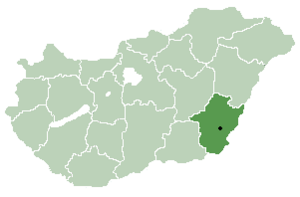Yazh
Yazh그yazhal(타밀:யாழ்도 음역 된 yāḻ, 발음[jaːɻ])은 아치형 하프 고대 타밀어 음악에 사용된.그것은는 구부러진 흑단 목에서 개막 때 soundboard의 껍질로 덮여 있는 보트나 trough-shaped 공진기에 달렸다 본능적인 문자열이 매달려 있었다.는 공진기에서 그 줄들은 사운드 보드..의 위에 놓고 현악기를 위한 구멍이 있준비했던 string-bar 또는 동조 바에 장착되었다.목은 또한 가죽의 덮여 있었을 수 있다.[1][2][3]
그 아치형 하프 인도에서 적어도 2세기 BCE, 여성이 그 악기에 의한 Bhārut에서 불교 작품으로 sculped 때부터 사용되었다.[4]로stick-zither 스타일 veenas하고 탁월함으로 증가했다 둘 다 인도harp-style veena과 타밀 yazh 7세기 지역 표준시에 대해 시작으로 감소했다.[1][2]
그 악기 신화 속 yali를(யாழி)언어학적으로 이 아치형 하프(முகம்)는 단어와 비슷한 단어 때문에 사귈 수 있다.어떤 관계가 단어일 수도, 언어학적으로 가지지 않더라도, 몇몇 연구원들이 신화 속 yali은yazh 하프의 목의 끝에 새겨졌다고 믿는다.[2]현악기와 yali의 관계는 이 타밀 악기, 그러나 또한 그의 Sangita Ratnakara에 Śārṅgadeva이ekatantristick-zither veena의 특징으로 언급되었다 제한을 받지 않는다.[5]현대의 사라스 바티 veena 이 기능을 보유하고 있다.[6]
역사적 설명
타밀 시인 티루발루바는 그의 작품 티루쿠랄에서 [8]야즈를 언급한다.상암 시대에 쓰여진 많은 주요 타밀 고전 문학 걸작들은 야즈를 언급하고 있다.타밀 체라 왕자 일랑고 아디갈이 쓴 실라파티카람은 네 가지 종류의 [9]야즈를 언급하고 있다.
- Peri yazh –21 스트링 - 큰 Yazh
- Makara yazh – 19 문자열 - makara yazh
- Cakota yazh – 14 문자열
- 첸코티 야즈 – 7줄
기타 유형의 yazh는 다음과 같습니다.
타밀어 책인 Perumpaāṟppappauppa saysai는 야즈의 끈에는 어떠한 곡절도 있어서는 안 된다고 말한다.야즈에 대한 언급이 있는 다른 타밀 문학은 Seevaga Sindhamani와 Periya Puranam이다.[12]현대에 와미 비풀라난다는 6개의 다른 야즈하프를 상술한 [13]타밀어로 된 과학 연구서를 썼다.
타밀어로 야즈파남으로 알려진 자프나라는 도시가 창건 이야기에 야즈파남으로 이름 붙여졌다.스리랑카 타밀의 전설에 따르면, 한 맹인 파난이 야즈 강에서 너무 아름다워서 왕으로부터 땅을 받았고, 그 땅은 말 그대로 [14][15][16]"하퍼의 마을"이라는 뜻의 자신의 이름을 따서 지어졌다고 한다.
문학뿐 아니라 타밀나두의 다라수람과 티루마얌 사원과 군투르 [17]지역의 아마라바티 마을에서도 볼 수 있는 조각품이다.
야즈는 수세기 초에 마두라이 미낙시 암만 사원에서 연주되었습니다.그것은 ShiivaThirumuri 11th Pathigam에 언급되었다.그것은 또한 종교 예배 이야기에 언급된 음악가이자 시인 파나파티라르가 연주했다.
மதிமலி புரிசை மாடக் கூடற்
பதிமிசை நிலவு பால்நிற வரிச்சிற
கன்னம் பயில்பொழில் ஆல வாயில்
மன்னிய சிவன்யான் மொழிதரு மாற்றம்
பருவக் கொண்மூப் படியெனப் பாவலர்க்
குரிமையின் உரிமையின் உதவி ஒளிதிகழ்
குருமா மதிபுரை குலவிய குடைக்கீழ்ச்
செருமா உகைக்குஞ் சேரலன் காண்க
பண்பா லியாழ்பயில் பாண பத்திரன்
தன்போல் என்பால் அன்பன் தன்பால்
காண்பது கருதிப் போந்தனன்
மாண்பொருள் கொடுத்து வரவிடுப் பதுவே
갤러리
외부 링크
레퍼런스
- ^ a b Alastair Dick (1984). "Yāl". In Sadie, Stanley (ed.). The New Grove Dictionary of Musical Instruments. p. 881. Volume 3.
- ^ a b c "Musical instruments played in India". Chapter of SPICMACAY, Cornell University. Archived from the original on 10 February 2010. Retrieved 16 November 2011.
The yazh is an ancient Dravidian instrument, somewhat like a harp. It was named for the fact that the tip of stem of this instrument was carved into the head of the animal yaali (vyala in Sanskrit). The yazh was an open-stringed polyphonous instrument, with a wooden boat-shaped skin-covered resonator and an ebony stem. It was tuned by either pegs or rings of gut moved up and down the string...was displaced by the veena in the middle ages
- ^ "Celebrating unheard melodies". The Hindu. India. 25 December 2010.
Yazh (a form of harp)...Notes (svaras) are known as Narambu. Narambu are the gut strings used in the Yazh. Each string of the Yazh was tuned to one note therefore this association of Narambu to note.
- ^ Catherine Ludvík (2007). Sarasvatī, Riverine Goddess of Knowledge: From the Manuscript-carrying Vīṇā-player to the Weapon-wielding Defender of the Dharma. BRILL Academic. pp. 227–229. ISBN 978-90-04-15814-6.
- ^ "Varieties of Veena". SARASWATHI VEENA(SARASWATI VEENA).
[paraphrased-translation placed online of parts of the Sangeeta Ratnakara of Sarngadeva]
- ^ Karaikudi S. Subramanian (Spring–Summer 1985). "An Introduction to the Vina". Asian Music. University of Texas Press. 16 (2): 9-13, 19. doi:10.2307/833772. JSTOR 833772.
- ^ லலிதாராம் (translation from Tamil: Lalitaram) (15 February – 14 March 2005). "யாழ் என்னும் இசைக்கருவி - ஒரு பார்வை (translation from Tamil: Jaffna Musical Instrument - A View)". Varalaaru.com. No. 8.
- ^ Xavier S. Thani Nayagam, ed. (1966). Tamil culture. Tamil (Indic people) (in English and Tamil). Vol. 12. Tamil Literature Society, Academy of Tamil Culture. pp. 208, 209.
- ^ Rangarajan, Haripriya (2001). Haripriya Rangarajan; G. Kamalakar; A. K. V. S. Reddy; M. Veerender; K. Venkatachalam (eds.). Jainism: art, architecture, literature & philosophy. Religion / Jainism (in English and Tamil). Sharada Publishing House. p. 142. ISBN 9788185616773.
- ^ "Musical Instruments". Government Museum, Chennai, India. p. 2. Archived from the original on 27 September 2011. Retrieved 16 November 2011.
- ^ "Musical Instruments". Government Museum, Chennai, India. p. 3. Archived from the original on 27 September 2011. Retrieved 16 November 2011.
- ^ "On the basics of conservation". The Hindu. India. 4 December 2009. Archived from the original on 25 January 2013.
- ^ "One hundred Tamils of the 20th century: Swami Vipulananda (1892–1947)".
- ^ Pārlimēntuva, Ceylon (1 January 1957). Ceylon Sessional Papers. Government Press.
- ^ Katiresu, Subramanier (1 January 2004). A Hand Book to the Jaffna Peninsula and a Souvenir of the Opening of the Railway to the North. Asian Educational Services. ISBN 9788120618725.
- ^ Rasanayagam, C.; Rasanayagam, Mudaliyar C. (1 January 1993). Ancient Jaffna: Being a Research into the History of Jaffna from Very Early Times to the Portuguese Period. Asian Educational Services. ISBN 9788120602106.
- ^ "Recreating treasures of the past". The Hindu. India. 26 December 2007. Archived from the original on 21 August 2008.









